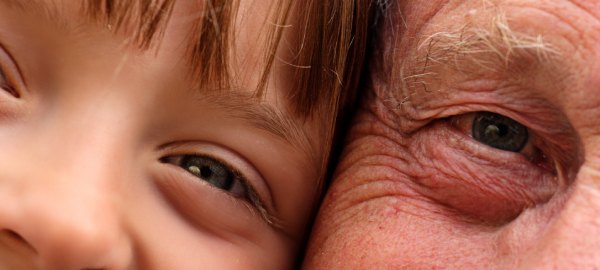Scabies
What is scabies?
- Once called the “lice of the flesh” by Greek philosopher Aristotle, scabies is a highly contagious and common itchy skin rash, caused by a tiny burrowing mite Sarcoptes scabiei.
What are the symptoms of scabies?
- Severe itching that is worse at night
- The itch tends to be “delayed” and is a result of the body’s allergic reaction to the mites, their eggs and their waste – the itch generally follows 2-3 weeks after the initial infection.
- However, if there is a re-infection, itch will start within hours.
- The itch may persist even weeks after the patient has completed treatment.
Other symptoms include
- Smaller blisters or erythematous papules (an inflamed, raised red rash that is elevated or filled with blood).
- In adults, these may appear commonly between the fingers, or on the wrists, the backs of elbows, knees, wrists, chest, nipples, waist, belly button and buttocks.
- In children scabies tends to appear more on the fingers, face, scalp, neck and soles of the feet.
- Linear scratch marks (straight line or streaks) are also common
- Vesicles (fluid-filled blisters) may signal a secondary infection
- In people with darker skin types, scabies may present differently as granulomatous nodules (an area of tightly clustered immune cells that may resemble a small red/pinkish pearl appearance).
- Inflammatory changes appear as redness when the skin is white and greyness when the skin is black
What are the complications of scabies?
- In more severe cases such as crusted scabies, also known as Norwegian Scabies, there are many hundreds more than the standard 10-15 mites seen in classical scabies.
- This can result in extensive spread all over the body including the scalp, trunk, back, limbs, face, neck soles of the feet, elbows, knees and palms.
- In this case, the scabies can also take on a wart-like appearance.
- Norwegian Scabies typically appear in immune-compromised patients, such as the elderly, patients with HIV or lymphoma. The itching is often not as severe in this type of scabies.
- The fingernails can be thick and discoloured and these lesions are also likely to predispose to Staphylococcus bacteria as a secondary infection.
- Bullous scabies are a type of scabies seen in elderly males where the bullae (fluid trapped under a thin layer of skin) may be tense or flaccid, and is usually linked to a secondary infection.
- Nodular scabies may be a reaction to dead mites or a persistent secondary infection that commonly affects male genitalia and breasts, armpits and buttocks. Despite treatment it may linger for months.
- Other complications of scabies include impetigo, toxic shock syndrome, glomerulonephritis (inflammation of the kidney filters) and acute rheumatic fever.
How is scabies diagnosed?
- Dr Parisa will take an extensive history and will also examine your skin using a special tool called a dermoscope to look closely at your skin for the tell-tale scabies “delta wing jet” sign.
- Other tests may include skin scrapings with a needle or blade (to detect eggs).
- Skin biopsies show eggs, larvae, mites and faeces but are rarely necessary.
How do you get rid of scabies fast – e.g., what is the best treatment for scabies?
- Classical scabies is treated with scabicide creams such as topical permethrin (adults and children).
- The oral medication ivermectin is often used for crusted scabies along with permethrin scabicide cream. These treatments are only available on prescription. All close contacts of a confirmed scabies case should be treated even if they have no symptoms, therefore may be an infection risk to others.
- Scabies spread through towels, sheets and clothing is uncommon as the mite perishes within 48 hours of leaving the host’s body. Nevertheless, it is a good idea to launder these items and air for 72 hours.
- Nails should be clipped and furnishings vacuumed
- As the itch can persist for weeks, topical steroids can be used especially where there is widespread scabies, while antihistamines can also help in some cases.
- Persistent cases should be assessed by a dermatologist or GP.
- Permethrin cream or lotion is safe in pregnancy and when breastfeeding but oral ivermectin is not advised.
- Phototherapy can be used for persistent scabies itch
How should I apply Permethrin?
- The cream should not be applied to the scalp or face, unless directed by the doctor.
- Start at the chin and apply lightly from the jawline downwards and leave overnight for 8 hours.
- Do not forget the ears, and apply solution to palms and rub your nails before you start to ensure that you are not transmitting through the nails.
- Permethrin is best applied after a shower to be better absorbed after skin is pat dried with a towel.
- Application should include under the nails and between the toes and all over the body so you may need someone to help with hard-to-reach areas like the back.
- Other areas that should not be forgotten are under the armpits, in the belly button, soles of the feet, in between butt cheeks, the groin area and genitals and in between fingers and toes which are a favourite hiding spot for scabies.
- Toenails are important too, as you may scratch your legs in your sleep with your toenails.
What is scabies misdiagnosed as?
Differential diagnoses for scabies include dermatitis (although this can occur WITH scabies too), folliculitis, Prurigo (subacute), psoriasis and infantile Acro pustulosis.
Disclaimer. Individual results may vary. All procedures have risks, to discuss the benefits of scabies treatments with your doctor.
References

